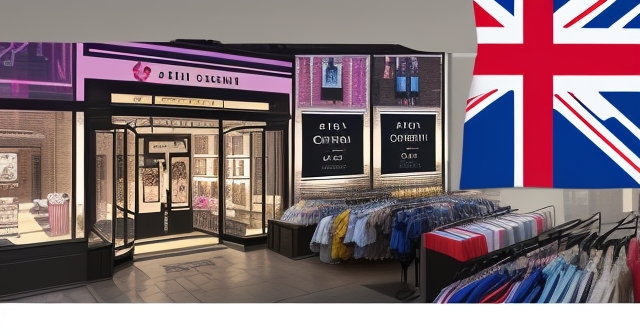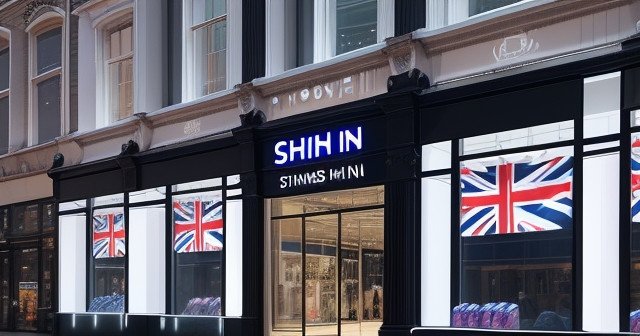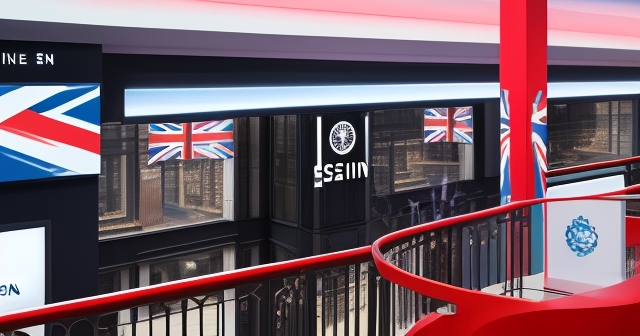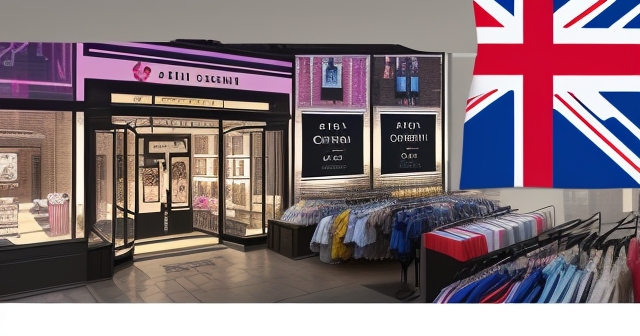Shein’s Public Ambitions: Navigating Regulatory Roadblocks on the Path to a London IPO
Fast-fashion behemoth Shein is actively pursuing an initial public offering (IPO), a pivotal move poised to significantly reshape the global fashion landscape. As investors and industry observers watch closely, the company’s journey toward public ownership has been marked by strategic pivots, intense scrutiny, and a complex navigation of international regulatory environments. While initially eyeing a listing in the United States, regulatory challenges have reportedly shifted the company’s focus towards the London Stock Exchange. This article delves into Shein’s evolving IPO plans, the significant obstacles it faces on its path to becoming a publicly traded entity, and what a successful or delayed listing could mean for the company, its competitors, and the broader fast-fashion industry.

For quite some time, market whispers and official reports positioned the United States, specifically the New York Stock Exchange (NYSE) or Nasdaq, as Shein’s primary target for its much-anticipated IPO. The US market, known for its deep pool of capital and investor appetite for growth stocks, seemed a natural fit for a company that had rapidly ascended to become the world’s largest fast fashion retailer.
- Shein has made a confidential filing with the US Securities and Exchange Commission (SEC).
- Regulatory challenges are primarily focusing on its supply chain and labor practices.
- Increased scrutiny is tied to geopolitical complexities involving China.
Reports from late 2023, around November, confirmed Shein had indeed made a confidential filing with the US Securities and Exchange Commission (SEC), signaling its serious intent for a US listing. However, this ambition soon encountered significant headwinds. You see, taking a company public in the US involves rigorous scrutiny, and for Shein, two major areas immediately drew attention: its supply chain and its labor practices.
| Regulatory Challenges | Description |
|---|---|
| Supply Chain Transparency | Concerns about the potential for forced labor within its supply chain. |
| Labor Practices | Intense regulatory pressure regarding ethical sourcing and labor conditions. |
Given Shein’s operational model, which heavily relies on a vast network of suppliers, primarily in China, concerns were raised about transparency and ethical sourcing. US regulators and politicians alike voiced apprehension regarding the potential for forced labor within its supply chain, a particularly sensitive issue. Furthermore, the intricate ties between the Singapore-headquartered company and its origins in China added layers of geopolitical and regulatory complexity.
This intensified regulatory pressure, including calls for detailed investigations by U.S. congressional committees, created a challenging environment for a US IPO. The level of scrutiny and the potential for prolonged delays or even outright rejection based on these concerns prompted Shein to reportedly reconsider its options. It became increasingly clear that the path to Wall Street was fraught with significant obstacles that needed to be addressed or potentially circumvented by exploring alternative listing venues.

Facing persistent hurdles in the United States, Shein began exploring other potential listing locations. Reports that emerged around June 2024 indicated a significant pivot in Shein’s strategy: a shift in focus towards the London Stock Exchange (LSE). But why London? For a company of Shein’s scale and global reach, London represents one of the few financial centers with the liquidity and international standing to handle a listing of its potential magnitude, which has been discussed at valuations ranging from tens of billions up to $90 billion.
- London offers international liquidity and a favorable financial environment.
- The UK regulatory landscape may be perceived differently than that of the US.
- A successful London listing could provide a significant boost to Shein’s market presence.
While London is not without its own regulatory requirements and investor concerns, the specific points of friction that arose in the US, particularly those tied to US-China relations and specific supply chain legislation, might be perceived differently or subject to a different approval process under UK law. The LSE has actively sought to attract major international listings, and a company the size of Shein would undoubtedly be a significant win for the exchange.
However, this pivot doesn’t mean an automatic green light. Listing in London simply trades one set of complex regulatory challenges for another. It indicates a strategic decision to pursue a path perceived as potentially more feasible or less obstructed than the US route, given the specific nature of the scrutiny Shein was facing. It’s a tactical redirection in the face of adversity, demonstrating the company’s determination to access public capital, even if it means adjusting the target destination.

This reported shift ignited considerable interest in the UK market, sparking debates about the LSE’s attractiveness for large-scale listings and the implications of welcoming a company with Shein’s unique business model and associated controversies.
The move towards a potential London listing places Shein squarely under the jurisdiction of the UK’s Financial Conduct Authority (FCA). The FCA is the regulatory body responsible for approving listing applications in the UK, and its review process is mandatory and thorough. Just as in the US, Shein’s application in London will face intense scrutiny, particularly regarding the very issues that complicated its US ambitions: its supply chain and labor practices.
| Potential Issues Under FCA Scrutiny | Description |
|---|---|
| Supply Chain Ethics | Review of ethical sourcing and labor conditions. |
| Transparency Requirements | Need for comprehensive disclosures on operational practices. |
Reports confirm that the FCA is undertaking its own mandatory investigations into Shein’s operations, focusing specifically on the ethical considerations surrounding its supply chain and labor conditions. This is a critical hurdle that must be cleared for the London IPO to proceed. The FCA needs to be satisfied that Shein meets the required standards for transparency, governance, and operational ethics before allowing it to list on the exchange.
Adding to the pressure, Shein faced accusations of “wilful ignorance” over forced labor allegations during a UK parliamentary committee hearing in January 2025. This public scrutiny from UK lawmakers underscores the level of concern within the country regarding Shein’s business model and ethical footprint. Such accusations, coupled with ongoing regulatory investigations, create significant uncertainty and could potentially delay or even derail the London IPO if the FCA is not satisfied with Shein’s responses and disclosures.

Furthermore, reports have suggested that Shein might be considering unconventional structures for its London IPO, such as seeking a waiver from the standard UK requirement for a minimum 10% public float. The “float” refers to the percentage of a company’s shares that are available for public trading. A smaller float can impact market liquidity and price volatility. Seeking an exemption from this standard rule would require further regulatory approval and might raise questions from investors about the company’s commitment to public market norms and liquidity. It highlights the lengths to which Shein is reportedly willing to go to facilitate its listing, but also adds another layer of complexity to the regulatory approval process.
One of the most discussed aspects of Shein’s potential IPO is its valuation. As a private company, its valuation has been determined through various funding rounds, reflecting investor sentiment and market conditions at specific points in time. We’ve seen figures fluctuate significantly over the past few years, illustrating both the company’s rapid growth and the challenges it faces.
- Valuation in 2022 was as high as $100 billion.
- By March 2023, valuation adjusted to $66 billion.
- Developments indicate possible IPO valuation could be around $50 billion.
In 2022, reports placed Shein’s valuation as high as $100 billion, a figure that would have made it one of the most valuable private companies globally, surpassing the combined market capitalization of established giants like Inditex (Zara) and H&M at the time. This heady valuation reflected the market’s excitement about Shein’s explosive growth and dominance in the online fast fashion space.
However, subsequent funding rounds saw a recalibration. By March 2023, Shein reportedly raised funds at a valuation closer to $66 billion. This decrease was attributed to various factors, including broader market corrections impacting tech and growth stocks, as well as increasing awareness of the regulatory and reputational risks associated with the company.
More recently, amidst ongoing headwinds and the pivot away from the US, some reports suggested Shein might have to consider a lower valuation for its IPO, potentially around $50 billion. Yet, counter-reports in late 2023 from sources like Bloomberg indicated Shein was still targeting a value of up to $90 billion in discussions with investors. This wide range of reported valuations underscores the uncertainty surrounding Shein’s true market worth in the public sphere and reflects the ongoing negotiation between the company’s growth narrative and the risks perceived by potential investors.

Ultimately, the IPO valuation will be determined by market demand and investor confidence during the book-building process. While Shein’s growth and profitability present a compelling case, the regulatory risks, political headwinds, and ethical controversies will likely influence how investors price the offering. It’s a complex balancing act, and the final valuation will be a key indicator of how the market weighs Shein’s potential against its liabilities.
Despite the regulatory and ethical storms swirling around it, Shein presents a powerful financial narrative to investors. As a private company, full financial disclosures are not publicly available, but leaked figures and company reports provided to investors paint a picture of impressive growth and profitability, which are key drivers for any successful IPO.
Reported figures for 2023 suggest Shein achieved approximately $32 billion in revenue. This is a staggering figure, positioning it firmly ahead of many long-established global fashion retailers. More notably, the company also reported significant profits, reaching around $2 billion in 2023. Achieving both rapid revenue growth and substantial profitability is a relatively rare feat, especially for a company operating on the scale and with the operational intensity of Shein’s fast fashion model.
| Financial Highlights | 2023 Figures |
|---|---|
| Revenue | $32 billion |
| Profit | $2 billion |
These robust financials are crucial for Shein’s IPO ambitions. They provide concrete evidence of its operational efficiency, market dominance, and potential for generating shareholder value. When investors evaluate a company for an IPO, strong growth and a clear path to profitability (or existing profitability) are paramount. Shein’s ability to generate billions in revenue and profit, even amidst its controversies, validates its business model in the eyes of many financial analysts.
However, it’s important to remember that these are figures reported by the private company itself. Upon becoming public, Shein would be subject to much stricter and more transparent financial reporting requirements. Public investors would gain access to audited financials, detailed breakdowns of revenue sources, cost structures, and profit margins. This increased transparency will be a major change for the company and a critical point of analysis for potential shareholders.
Ultimately, while the reported financials are a significant strength supporting the IPO, the true test will come when the company opens its books to public scrutiny, allowing investors to fully understand the nuances and sustainability of its profitability.
Even as Shein pivots its IPO focus to London, a significant political risk factor originating in the United States could still profoundly impact its business model and, consequently, its valuation and future performance: the potential removal of the “de minimis” tariff exemption.

The de minimis rule in the US allows individual shipments valued at less than $800 to enter the country duty-free and with minimal customs inspection. This rule was initially designed to streamline customs processing for small parcels, primarily benefiting individuals. However, companies like Shein and its rapidly growing competitor, Temu (owned by Pinduoduo), have strategically leveraged this rule to ship vast quantities of low-value items directly from manufacturers overseas to individual consumers in the US. By shipping millions of small packages directly, they bypass traditional import duties and taxes that apply to larger commercial shipments entering the US via wholesalers or retailers.
Reports indicate that Shein and Temu together account for a substantial portion – potentially more than 30% – of all packages entering the US under this de minimis exemption. This reliance on the rule is a cornerstone of their low-cost operational model in the US market, allowing them to offer highly competitive prices to consumers.
However, this practice has drawn significant criticism from US retailers and lawmakers, who argue it creates an unfair competitive advantage for foreign e-commerce companies and encourages the influx of goods that might not meet US safety or labor standards. Former President Donald Trump has specifically proposed closing this “de minimis” loophole if he were to return to office.
Should the de minimis rule be abolished or significantly altered, Shein would face substantial increases in import costs for its US shipments. These costs would likely have to be absorbed by the company (reducing profitability) or passed on to consumers (increasing prices), potentially impacting Shein’s competitiveness in its largest market. This uncertainty represents a material political and economic risk that investors considering a Shein IPO, regardless of the listing venue, must seriously evaluate.
At the heart of Shein’s phenomenal growth lies its highly optimized, data-driven fast fashion business model, often described as ‘test and repeat’ or ‘on-demand’. This model is a key factor in its success and a major point of interest for investors, but it is also the direct source of many of the controversies surrounding the company.
Instead of producing large collections seasonally like traditional fashion retailers, Shein works with a vast network of suppliers to produce clothing in extremely small batches, sometimes as few as 50-100 pieces per design. These small batches are quickly listed on their app and website. Shein’s powerful data analytics track real-time customer interactions – what users are looking at, adding to carts, and purchasing. Designs that perform well are rapidly scaled up for mass production, while those that don’t are discontinued. This rapid design-to-sale cycle can be as fast as 25 days, a pace unmatched by most competitors.
- Shein’s business model minimizes unsold inventory.
- It allows for a constant stream of new, trend-driven items to consumers.
- However, it encourages overconsumption and raises ethical questions.
This ‘on-demand’ approach minimizes unsold inventory and allows Shein to constantly offer a fresh, trend-driven selection of thousands of new items daily. Their direct-to-consumer (DTC) model, amplified by aggressive social media marketing (particularly on platforms like TikTok through influencer ‘hauls’), resonates strongly with their primary target audience, GenZ consumers, who crave constant novelty and affordability.
This business model has propelled Shein to an estimated 18% global fast fashion market share, making it the industry leader. However, the very speed and scale of this model generate significant concerns. Critics argue that it inherently encourages overconsumption, leading to massive waste as consumers quickly discard cheap, low-quality items. The rapid production cycle and reliance on a dispersed supplier network also raise serious questions about labor conditions within those factories, including allegations of excessively long working hours and low wages, which we will discuss further.
So, while the business model is a clear engine of growth and a source of competitive advantage, its inherent link to environmental impact and labor ethics presents a fundamental challenge that Shein must address, especially under the increased visibility of public ownership.
Perhaps more than any other factor, the significant controversies surrounding Shein pose the most persistent threat to its reputation and potentially its IPO prospects. While its business model drives growth, the ethical and environmental implications of that model are under increasing scrutiny from regulators, consumers, and potential investors.
| Key Controversies | Description |
|---|---|
| Labor Practices | Allegations of poor working conditions and forced labor. |
| Environmental Impact | Concerns about waste and unsustainable practices. |
| Design Plagiarism | Accusations of copying designs from independent creators. |
For a private company, managing these controversies can be challenging, but for a publicly traded company, the pressure for transparency and accountability increases dramatically. Investors, particularly those focused on Environmental, Social, and Governance (ESG) factors, will demand clear evidence of improvement in labor conditions, supply chain traceability, and environmental footprint reduction. Shein’s ability to credibly address these deep-seated issues will be critical to maintaining investor confidence and ensuring long-term sustainability, far beyond the initial IPO event.
The timing of Shein’s potential IPO is not solely dependent on its readiness or regulatory approvals; it is also significantly influenced by the broader capital market conditions. The global IPO market experienced a notable slump in the past two years, with fewer companies going public and many that did facing challenging post-listing performance. Factors contributing to this included economic uncertainty, rising interest rates, and volatile stock markets.
However, forecasts for 2024 and early 2025 have suggested a potential thawing of the IPO market. As inflation pressures potentially ease and central banks signal shifts in monetary policy, investor appetite for new offerings could increase. A more favorable market environment is crucial for a company like Shein, aiming for a high-profile, multi-billion dollar listing. Positive market sentiment can lead to stronger demand for shares, a higher valuation, and better post-IPO trading performance.

Shein has reportedly been laying the groundwork for its potential London listing, including undertaking an investor roadshow in late 2024. An investor roadshow is a critical step in the IPO process where company executives and their bankers meet with potential institutional investors to gauge interest and provide details about the company’s financials, business model, and growth strategy. The feedback from these meetings helps determine the potential valuation and the terms of the offering.
The fact that Shein is conducting these pre-IPO activities indicates its seriousness about going public relatively soon, contingent, of course, on receiving the necessary regulatory nods in the UK and market conditions remaining conducive. While specific timing predictions vary across reports (sometime in 2024, early 2025, H1 2025, H2 2024), the general consensus is that Shein is actively preparing and waiting for the right window to open, likely targeting early to mid-2025 for a London debut.
Should Shein successfully navigate the regulatory hurdles and unfavorable market perceptions to go public, the event would have profound implications not only for the company itself but for the entire global fashion retail industry. Becoming a publicly traded company is a transformative step that brings both opportunities and responsibilities.
For Shein, the primary benefit of an IPO is accessing a significant pool of capital. The funds raised could be deployed to fuel further expansion, invest in technology and supply chain infrastructure, diversify its manufacturing base to mitigate risks associated with over-reliance on one region, and potentially pursue acquisitions. Public status could also enhance its brand visibility and credibility on a global scale.
However, public ownership also brings increased accountability and visibility. As we’ve discussed, Shein’s financials, operations, and controversies will be under constant public and media scrutiny. The company will face pressure from shareholders, regulators, and activist groups to improve transparency, address labor and environmental concerns, and adhere to higher standards of corporate governance. Failure to do so could impact its share price and reputation.
For the fast fashion industry and its competitors, Shein’s IPO would intensify the competitive landscape. Established players like Inditex (Zara), H&M, and even e-commerce giants like Amazon and Temu, are already grappling with Shein’s disruptive model and market share gains. A publicly traded Shein, potentially armed with billions in fresh capital, could accelerate its expansion into new markets, categories, and even potentially physical retail (building on partnerships like its joint venture with SPARC Group, which operates Forever 21 stores).
This would likely force competitors to further accelerate their own digital transformation, supply chain optimization, and efforts to appeal to younger, digitally-native consumers. It could also bring the industry’s ethical and environmental challenges into even sharper focus, potentially forcing a broader conversation and perhaps even regulatory action across the sector. A public Shein means the industry’s largest player will operate under a much brighter spotlight, with ripple effects felt globally.
Shein’s journey towards a public offering is undeniably a complex and fascinating case study in global business, e-commerce disruption, and the challenges of operating at scale in a world increasingly concerned with ethics and sustainability. The pivot from a US IPO target to a potential London listing highlights the significant impact of regulatory scrutiny and geopolitical factors on even the most successful global companies.
While Shein presents a compelling financial story of rapid growth and profitability driven by its innovative, data-powered business model, it must successfully navigate substantial hurdles. The outcome of the UK Financial Conduct Authority’s investigation into its supply chain and labor practices is paramount for the London listing to proceed. Simultaneously, potential political decisions in its largest market, the US, such as changes to the de minimis rule, pose ongoing threats to its core operations.
The coming months will be critical. We will be watching for signs of progress in the UK regulatory review, further clarity on the proposed IPO structure (including the potential waiver for the public float), and any shifts in the global IPO market sentiment. We will also be monitoring how Shein continues to address the persistent controversies surrounding its labor and environmental footprint – issues that will only become more pressing under the transparency demands of public ownership.
Ultimately, Shein’s ability to go public, the valuation it achieves, and its performance as a listed company will not only determine its own future trajectory but will also send lasting ripple effects across the global fast fashion industry, potentially accelerating change and intensifying competition for years to come. It’s a high-stakes endeavor, and its resolution holds significant implications for investors, consumers, and the future of retail.
is shein going publicFAQ
Q:What are Shein’s primary challenges in pursuing an IPO?
A:Shein faces regulatory scrutiny regarding its supply chain, labor practices, and geopolitical complexities, particularly concerning its ties to China.
Q:Why has Shein shifted its IPO focus to London?
A:London offers a more favorable regulatory environment and liquidity for international listings, which may be less obstructive than the US regulatory landscape.
Q:What impacts could Shein’s IPO have on the fashion industry?
A:Shein’s IPO could intensify competition among established players, force ethical and sustainability issues into the spotlight, and drive significant changes across the industry.

留言